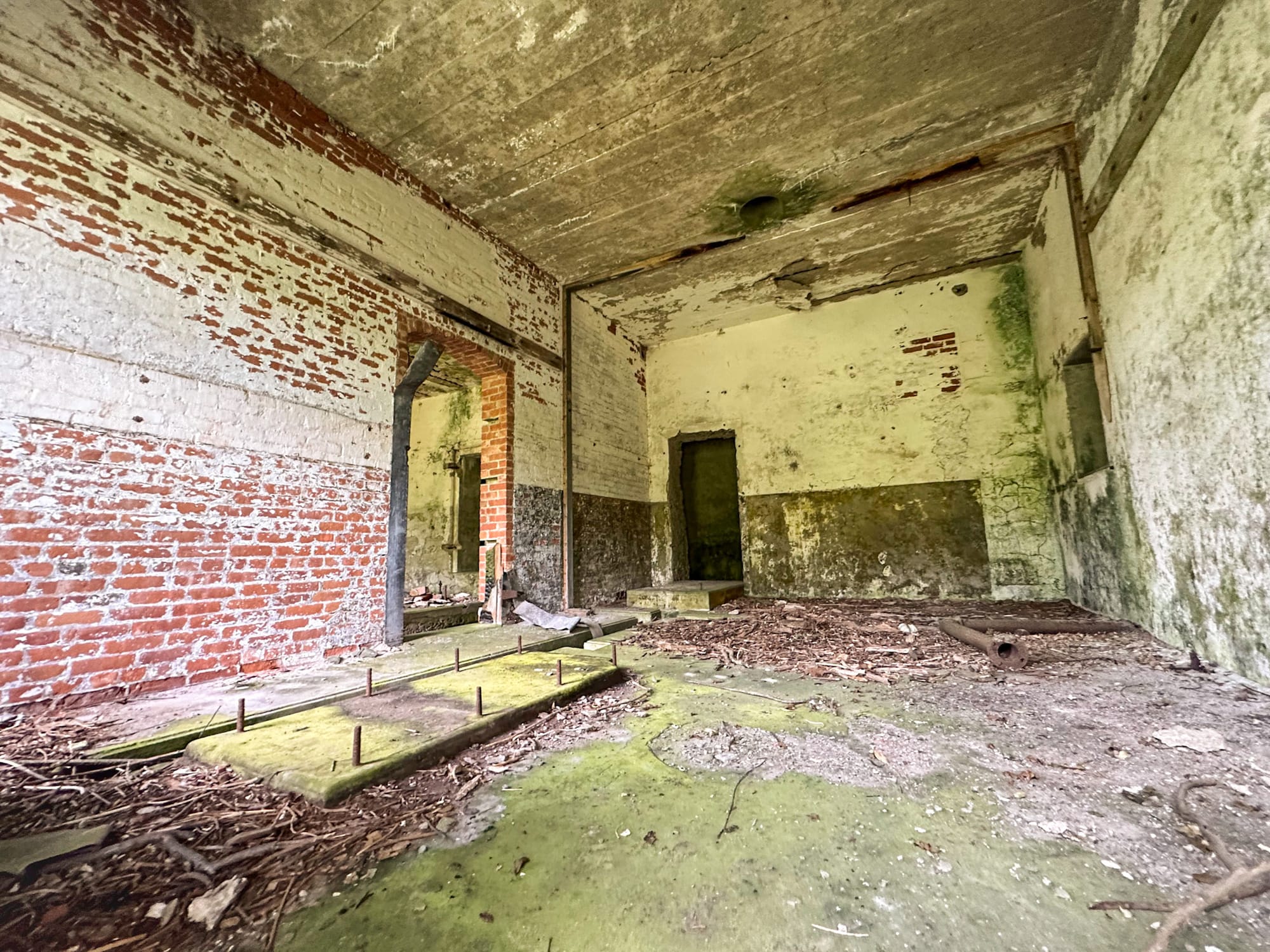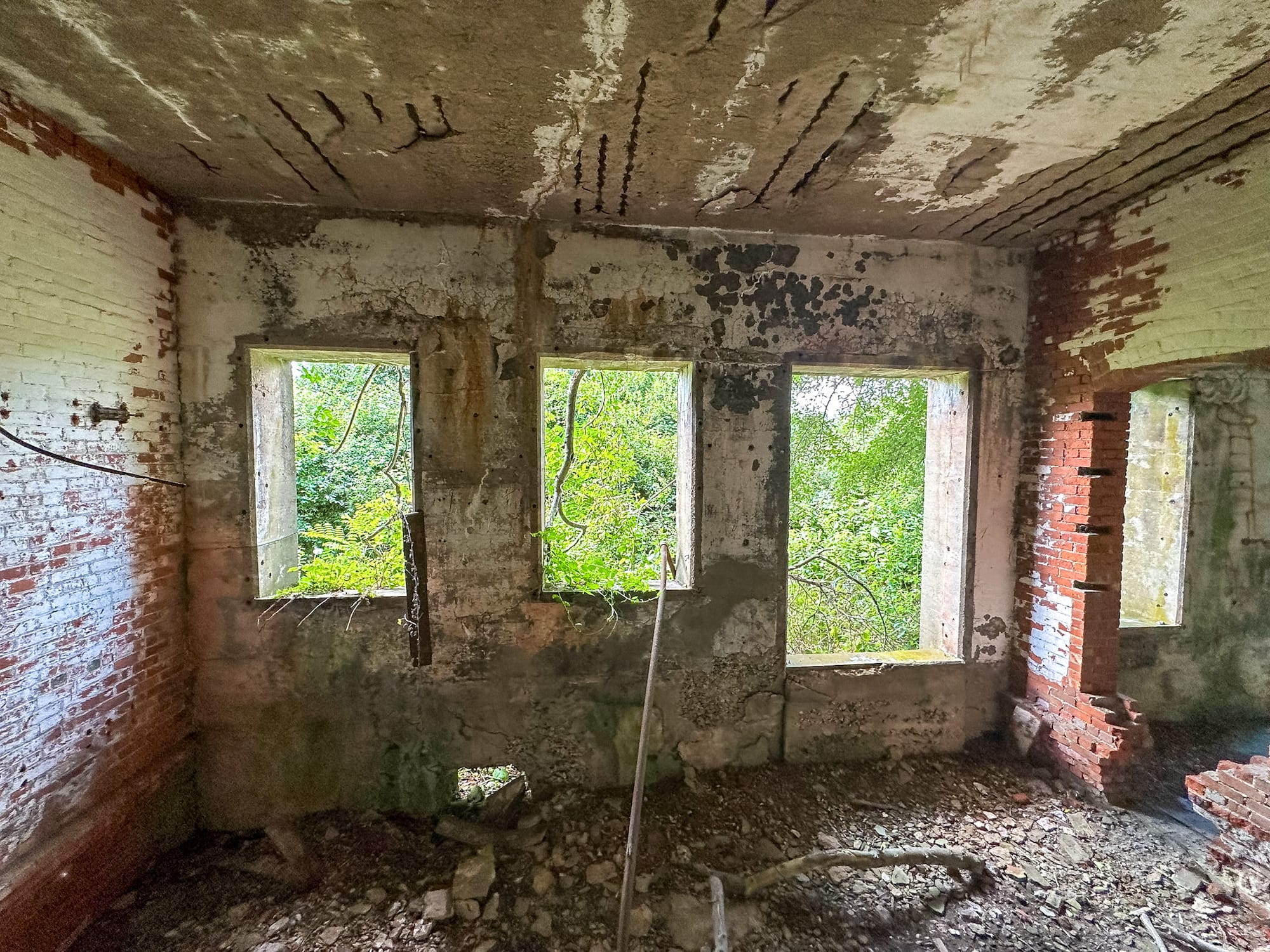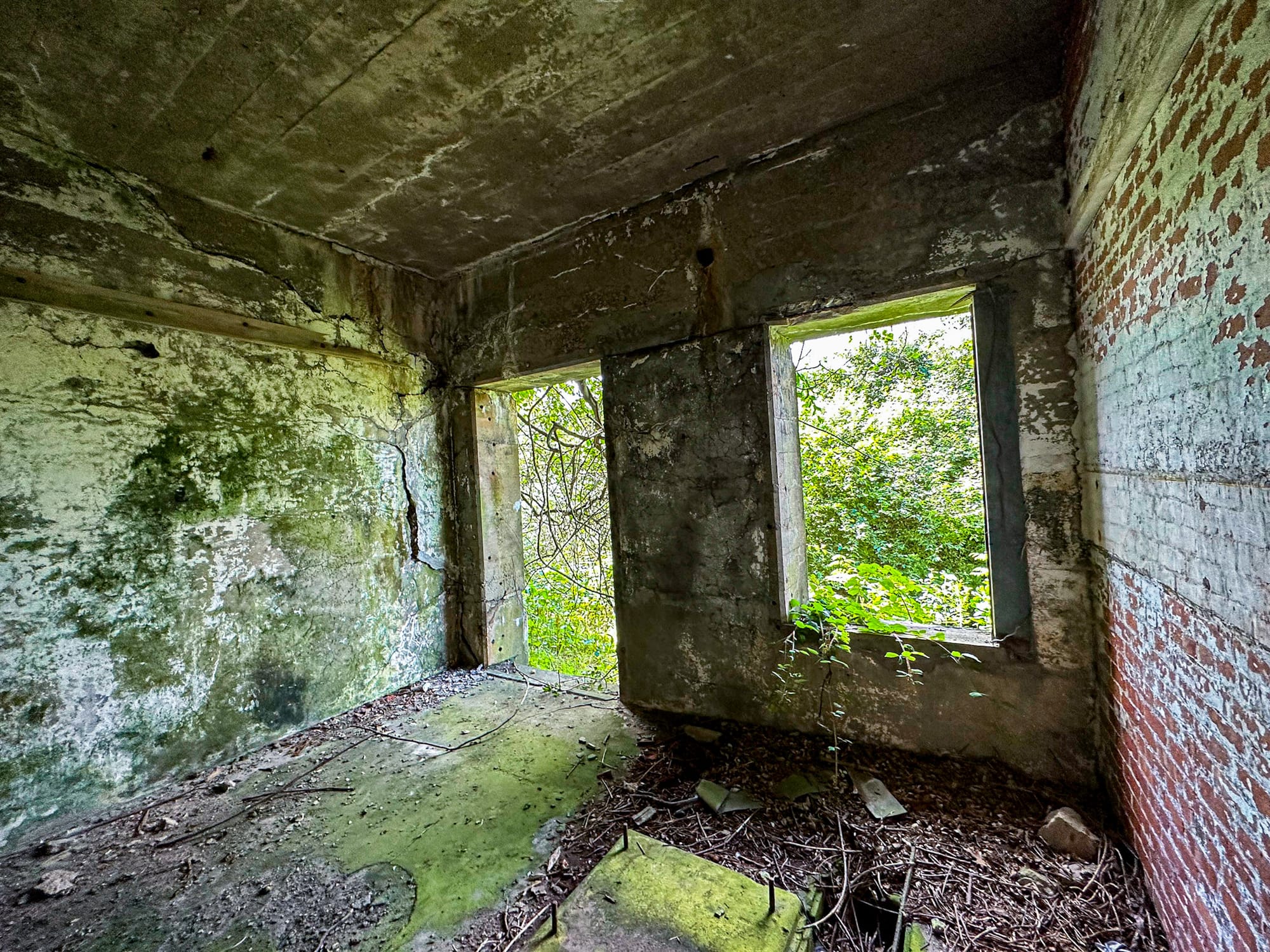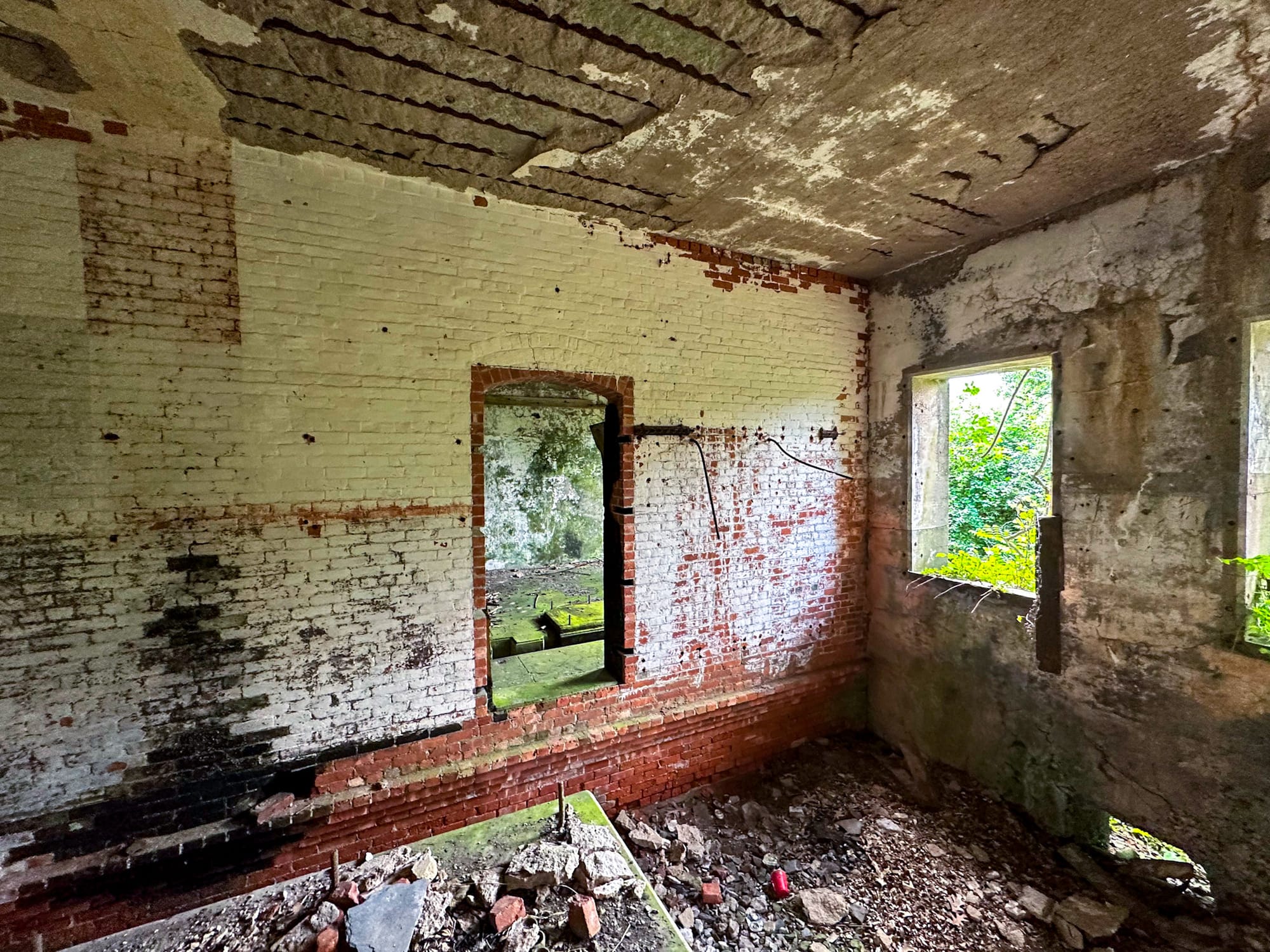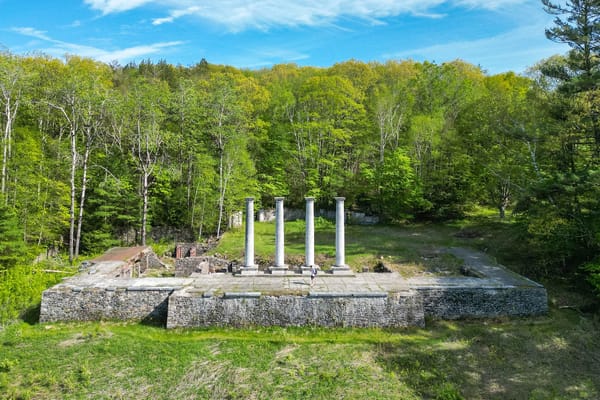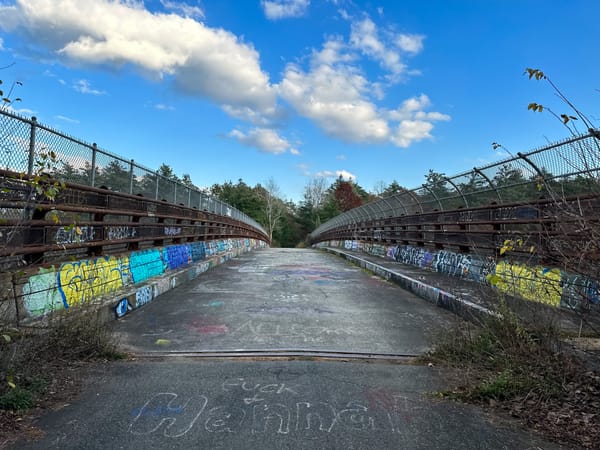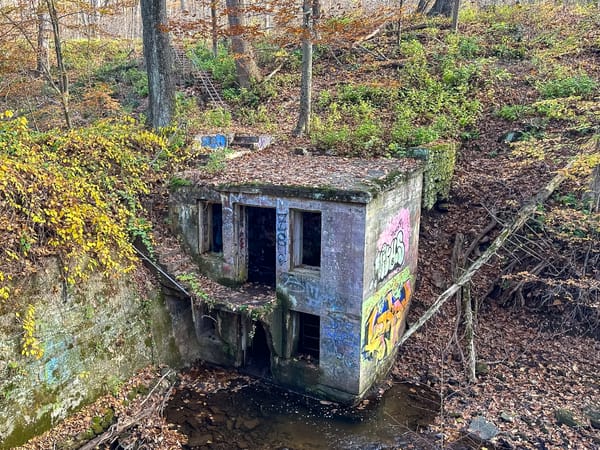Fort Greble Powerhouse (Dutch Island, RI)
Within the overgrown Dutch Island, off Jamestown, Rhode Island, the Fort Greble Powerhouse stands as a reminder of America’s coastal defense network.
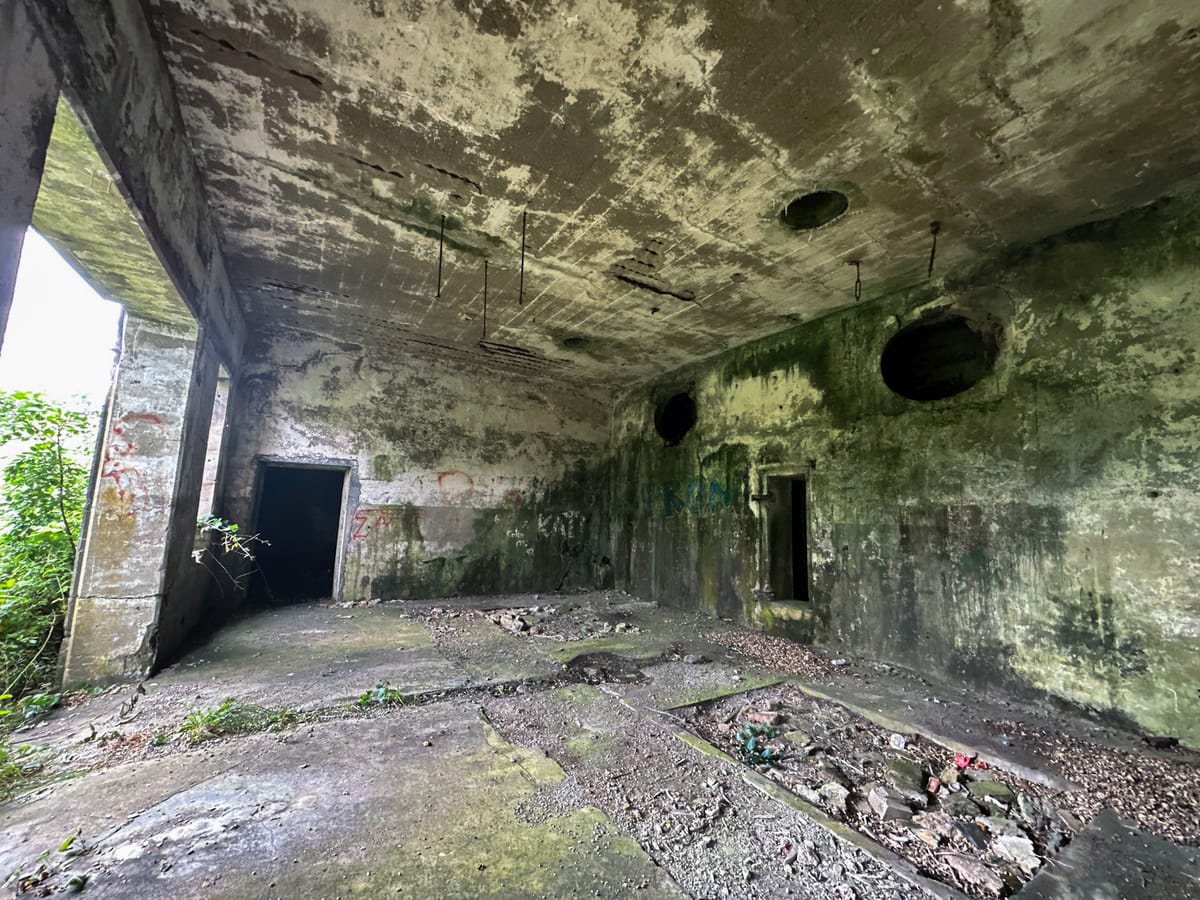
Exploring the Fort Greble Powerhouse: Dutch Island’s Forgotten Engine of War
Tucked deep within the overgrown heart of Dutch Island, off Jamestown, Rhode Island, the Fort Greble Powerhouse stands as a haunting reminder of America’s once-formidable coastal defense network. Crumbling walls, rusted vents, and the towering remains of its chimney mark what was once the beating heart of the island’s military infrastructure — a place where steam, steel, and electricity powered the guns that guarded Narragansett Bay.
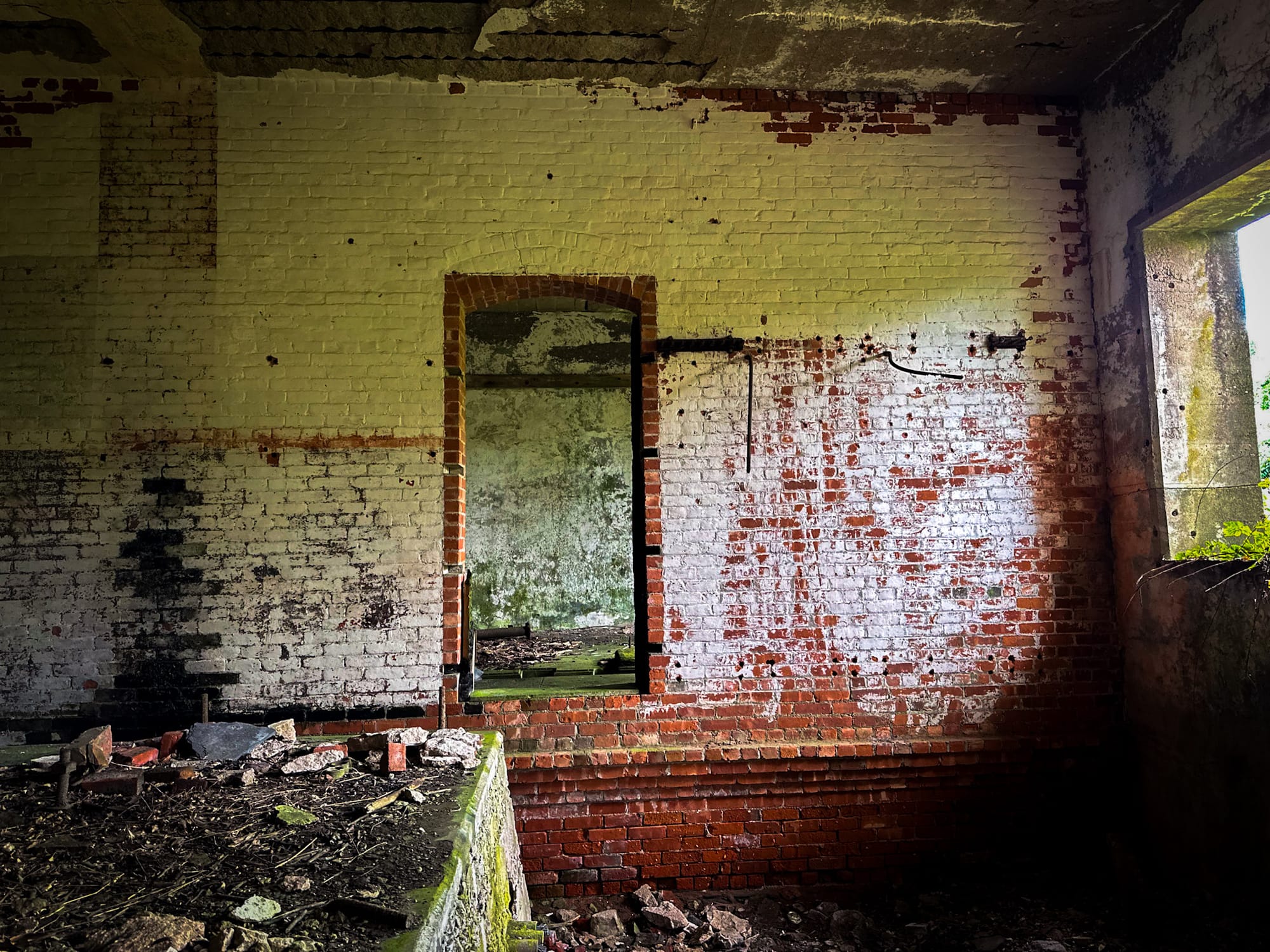
Powering a Fortress: The Birth of the Fort Greble Powerhouse
Built in 1901, the Fort Greble Powerhouse was part of the sweeping modernization of U.S. coastal defenses during the Endicott Period (1890–1910). The Endicott Board, created in 1885, recommended a nationwide system of reinforced-concrete batteries, electric range-finders, and modern utilities — a revolution in coastal warfare strategy.
To operate the heavy artillery of Battery Sedgwick, Battery Hale, and Battery Mitchell, Fort Greble required a steady supply of electrical power. The powerhouse provided it. Its coal-fired boilers created steam to drive generators, producing electricity for lighting, communications, and the motorized shell hoists that fed the big guns.
The structure was strategically built of reinforced concrete, its low profile and sturdy walls designed to withstand potential bombardment. The tall brick chimney, still visible across the island’s treeline today, once vented smoke from the roaring furnaces within.

From Industrial Might to Abandonment
For decades, the Powerhouse was a hub of constant noise and activity — the rhythmic chug of engines, the hiss of steam, and the hum of generators filled the air. But as coastal defenses fell out of favor in the early 20th century, so too did the need for such facilities.
During World War I and World War II, many of Fort Greble’s guns were removed, repurposed, or scrapped. By 1947, the entire fort was decommissioned, and the Powerhouse was left to nature’s slow reclamation.
Today, its chimney still stands, but the rest of the building lies in ruin — walls fractured, foundations overgrown with vines, and open skylights framing the sky where a roof once stood. The skeletal mounts where boilers were once anchored remain, silent evidence of its industrious past.

Visiting the Ruins Today
Exploring the Fort Greble Powerhouse is not for the casual visitor. The building sits on Dutch Island, which is accessible only by boat.
Most adventurers launch kayaks or paddleboards from Fort Getty State Park, located across West Passage in Jamestown. Once ashore, visitors must bushwhack through thick undergrowth and navigate unmarked terrain to reach the site. The journey is challenging but rewarding, offering views of untouched wilderness and the remnants of Rhode Island’s military history few ever see.
While the structure is open and can be explored carefully from the outside, entering the building is risky — unstable masonry, debris, and decades of decay make it unsafe. Visitors are encouraged to admire and photograph the ruins while maintaining a respectful distance.
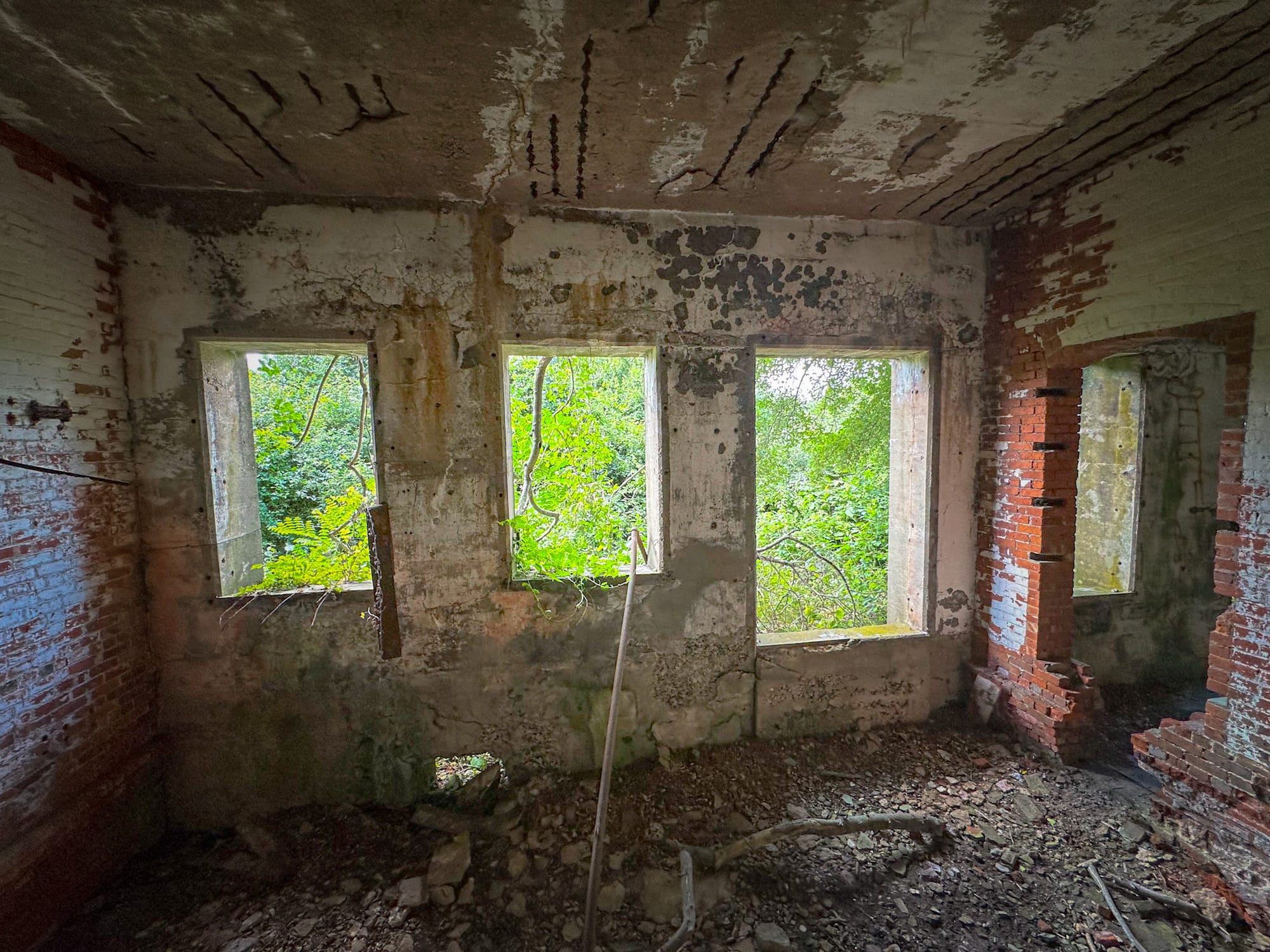
Visiting Information
- 📍 Location: Dutch Island, Jamestown, Rhode Island
- 🌐 GPS Coordinates: 41.506083, -71.399111
- 🛶 Access: By boat only (from Fort Getty State Park)
- 🅿️ Parking: Available at Fort Getty State Park (fee charged in summer)
- 💰 Fees: Seasonal day-use fee for park access and launch
- ⚠️ Safety: Unstable structure — observe from outside only
- 🕰 Best Time to Visit: Late spring through early fall (calm waters and low winds)
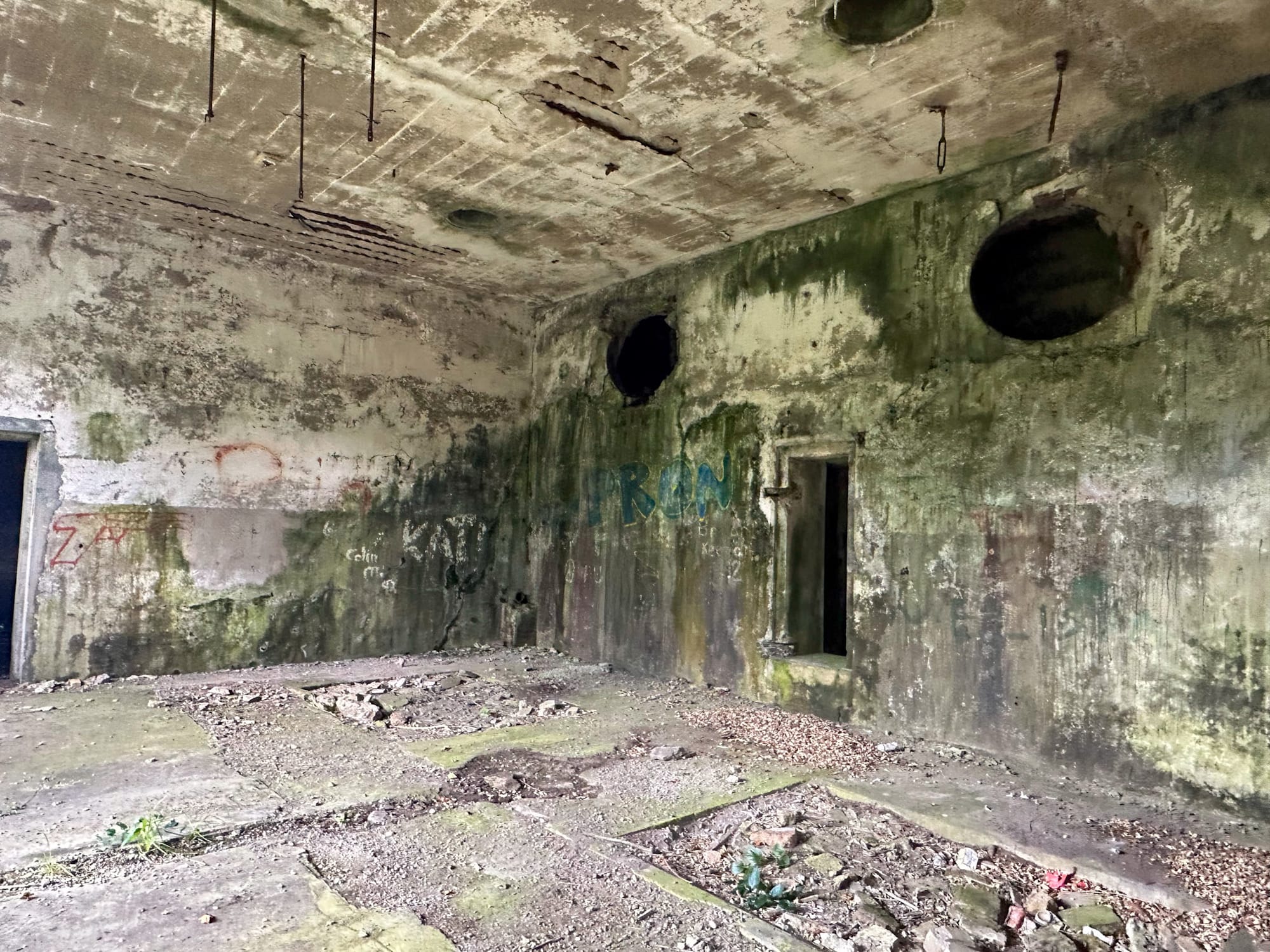
Quick Facts
- 🏗 Built: 1901
- ⚙️ Purpose: Generated power for Battery Sedgwick and other Fort Greble structures
- 🔥 Power Source: Coal-fired boilers driving steam generators
- 🧱 Construction: Reinforced concrete with brick chimney
- 🎖 Era: Endicott Period (1890–1910)
- ⚡ Decommissioned: 1947 (when Fort Greble closed)
- 🏚 Current Condition: Walls standing; roof gone; chimney intact
- 🛶 Access: Boat only from Jamestown’s Fort Getty State Park
- 🚫 Entry: Unsafe to enter — observe from outside
- 📸 Photo Tip: Best light in early morning when sun hits the chimney

Final Thoughts
The Fort Greble Powerhouse is more than an abandoned building — it’s a ghost of America’s coastal-defense ingenuity. Its cracked walls and hollow chambers once powered an entire island fortress, lighting the way for soldiers who stood watch over Narragansett Bay.
Today, the hum of machinery has faded, replaced by the sounds of wind and surf. Yet, for those willing to journey off the beaten path, the powerhouse remains a powerful symbol of Rhode Island’s hidden military past — a place where history hums quietly beneath the ivy and rust.
